In today's ever-evolving socio-political landscape, discussions surrounding identity, representation and the wounds carried by marginalized communities have become increasingly vital. Among these conversations, the exploration of Latinx and Chicanx experiences, particularly regarding their woundedness, has emerged as a poignant focal point.
In "The Wound and The Stitch: A Genealogy of the Female Body from Medieval Iberia to SoCal Chicanx Art," Loretta Ramirez, an Assistant Professor of Latinx Rhetoric & Composition at Cal State Long Beach, delves into the significance of the complexities of Latinx and Chicanx bodies and the wounds they bear.
With a keen eye on the present moment, Ramirez contextualizes their exploration within the current political atmosphere, where dialogues on marginalized lives and systemic inequalities have taken center stage. They shed light on the timeliness of their work, noting that the societal urge for healing and wholeness intersects deeply with the lived experiences of woundedness within Latinx and Chicanx communities.
As the conversation unfolds, it becomes clear that Ramirez's journey is not just scholarly but deeply personal, rooted in their own experiences as a Chicana navigating academia's often exclusionary spaces.
This interview has been edited for length and clarity.
I don't know if a book like this would exist 20 years ago, maybe even 10 years ago: a book about Latinx and Chicanx bodies and the topic of their woundedness. So why was it important for you to explore this topic now?
I agree with you. I think that the topic is timely now, when perhaps it wouldn't have been so well received or published in the past. I think one of the reasons is that we have a political atmosphere at the moment where we're talking about the lives that matter and the lives that do not matter. I think thinking about the woundedness and making them visible, I believe we're very much a culture …- or society that seeks out healing, and wholeness. That definitely is our goal in life, to be well.
But many of us live with woundedness that does not go away, [such as] linguistic woundedness, where we cannot speak. The way that we feel would be representative of ourselves. Maybe it's landed woundedness, where we're not living in the spaces that our family claims and our heritage claims. So when we think about some of the recent movements, I’m especially referring to Black Lives Matter, a lot of which is built on the wounds of the Black community.
What was it about those recent movements that informed your writing in the book?
The book, which is based off of my dissertation, was completed in 2020. And there was a lot of woundedness going on at this time. COVID had hit and we were in lockdown. The summer of 2020 we had massive protests in the streets with Black Lives Matter, and a number of violent actions committed against the Black community. So it moved from dissertation to book and I think that thinking about the physicality of a man who is unable to breathe and allowing breath and being denied breath. That is something that brings attention.
I think that empowered the book as it moved from a limited audience of the dissertation to a wider mainstream population. I believe that woundedness when we're just exhibiting woundedness …has power.
I do want to talk about that word, woundedness. By the end of the book, I found it to be a beautiful word. But something I was surprised to see in the book were the wounds that you carry. You talked about your wounds as a student, as a professor and as a Chicana. What eventually led to you deciding to write about yourself for the book?
When I was working on my dissertation at UC Irvine, I was the only Latina in the cohort and in my immediate class demographics. I was taking a series of classes where my ideas were sort of met with pause, hesitation, like, “What is she talking about?” But even with support, I was always on the sidelines of my classes. My ideas always seemed kind of wacky and I had a really great advisor who oversaw my whole PhD experience and I'd go to him and he'd say, “Investigate it. Investigate the silence pauses.”
I was reading a piece on semilingualism and I thought “That's me, right? That's absolutely me.” I can switch modes of the way I'm talking. But I always feel partial in all of those modes. So when I'm with my cousins, whose education was limited, I don't quite talk like them, I'm kind of like the “Oh, there's the wacky cousin.” And when I go to the university setting and sometimes my more common talk slips and then I’m “there me, the wacky professor.” And so I was always semi, semi of my culture, semi of the university, so that was my inspiration bomb.
I found it illuminating that you were vulnerable enough to be able to talk about yourself in that way. Having to examine and understand wounds, you almost have to be in this vulnerable state, I would imagine. What was it like for you to examine yourself and other people in a very vulnerable state when exploring their wounds?
I recently attended a conference on autoethnography where we kind of center our research based on our own experiences. So, all these writers who explore the world through ourselves, through our lens of experiences, kept saying, “You go through the woundedness when we're thinking about the wound. You can't go over it, you can't go below it, you can't go around it, you have to delve into the wound to get through it.” So, it's a brave act to confront the woundedness.
In the book you say, “By observing yesterday's wounds in today's reality, we might advocate compensation to distinct communities while celebrating perseverance, and resistance, even in a state of woundedness.” At what point did you say to yourself that this was the process that you were going to undertake to complete this book?
I feel like a lot of audiences don't understand the rhetoric of woundedness. So a lot of times if we say, “I have a wound, I'm not feeling good. I'm feeling like there's trouble.” There's this desire to help the person not be wounded rather than to hear about the woundedness, right? We want to put a bandaid on our wounds. I felt like Chicana expression of woundedness needed to have a serious kind of contextualization.
I speak about Cherríe Moraga and sometimes I've been asking “Why am I studying Cherríe Moraga?” She’s from the 1970-80s, we've written about her, we've talked about her but we haven't really talked about the way she talks about her woundedness. So I felt like there seems to be a short shelf life for Chicano writers. We only talk about them for like 20 years or so in the scholarly community and it's like, “Oh, we've already done Cherríe Moraga, let's move on. We want the new Chicana, we don't want the old Chicana.” But we're still talking about Shakespeare, we're still talking about ancient Greece when we're talking about rhetoric, right? So why does a certain lineage of male European thinkers and writers get thousands of years of scholarly attention, but with Chicanos we have to move on after a couple of decades? So I was like, “No, I, we can't move on. We're never going to move on.”
I would imagine that you, being a professor, informs your work when you talk to your students about these artists and their work. You see their immediate reaction to the work you expose them to. So, how does being a professor inform your process? Not with the text itself, but your experience of talking to an audience about a topic that many might not even know about.
I had a student I was teaching kind of the same concepts with Ana Castillo and I had a student who wrote about one of her books and I was stunned. She thought that to be partial, to be semi, was to be kind of insane. And reading about Castillo and the framework that we discussed in class, that seminess is okay, we really validated her as a first generation Chicana. It really clicked with the whole class, so that one student stays in my memory. She felt insane as a student.
I would think that it's almost a perfect word to describe so many students right now, to be semi, especially Latinx students. Not necessarily being too Latino/a with your family but also not being too scholarly at school. Do you see that firsthand as a professor?
Definitely, again, it comes from my life experience, it comes from observing my students, and I'm afraid for my students. There's just too much pressure just to say “I'm 100% this student.” I mean, making it okay to say woundedness and to recognize that we actually have a rhetorical tradition of speaking of woundedness. I think it gives license for students to address these semi experiences.
I keep asking you who, how, what writings informed you but I also want to talk about who you imagine reading this book? And who do you imagine is going to learn a lot from this book?
I think there are a lot of audiences for it, I think I was very scholarly, so it's a little theory-driven. So I'm hoping that I can help other educators and scholars to think about this “in-between” that a lot of our students are experiencing. My primary audience is really my students and [it] gives them some insights into art. I'm hoping that I can expose students to people who are doing a lot of creative, inventive writings, photography and art, that's talking about how woundedness can be generative. If you're in a wounded experience, how do we articulate it to heal ourselves?
Is there something you hope a young Chicana reader can see in this piece of work that someone who isn't necessarily that, can not see?
A lot of times in the book, I narrow in on the Chicana, the female experience. And then I kind of broaden it into Chicanx experience. I think that we're still talking about cultural rhetoric that impacts both male, female and binary identities. So I do think it sometimes goes really wide to a cultural rhetoric. But I think when zooming into the female experience, there is a lot of embodiedness. I think Chicanas can tap into the ways that wounds impact right to the body. So there are moments where it’s a broader audience, but I do frequent areas where it's me talking to the Chicana. Yeah, it's a girls club in parts of the book.
“The Wound and the Stitch: A Genealogy of the Female Body from Medieval Iberia to SoCal Chicanx Art” releases May 24. Pre-order the book here.

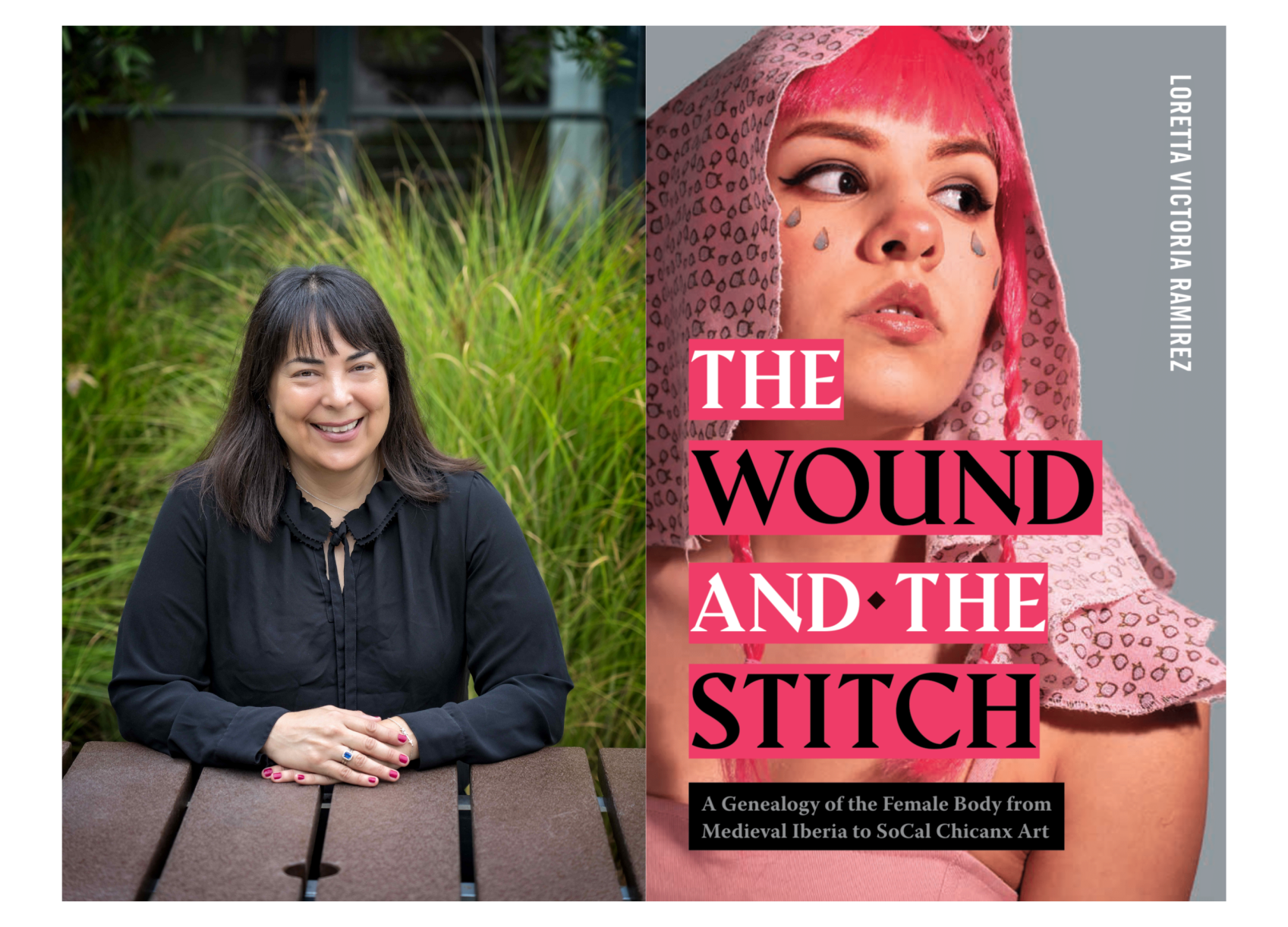
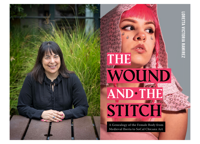

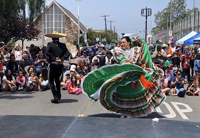



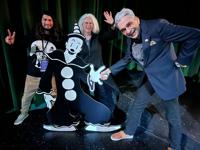

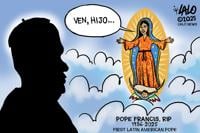
(0) comments
Welcome to the discussion.
Log In
Keep it Clean. Please avoid obscene, vulgar, lewd, racist or sexually-oriented language.
PLEASE TURN OFF YOUR CAPS LOCK.
Don't Threaten. Threats of harming another person will not be tolerated.
Be Truthful. Don't knowingly lie about anyone or anything.
Be Nice. No racism, sexism or any sort of -ism that is degrading to another person.
Be Proactive. Use the 'Report' link on each comment to let us know of abusive posts.
Share with Us. We'd love to hear eyewitness accounts, the history behind an article.